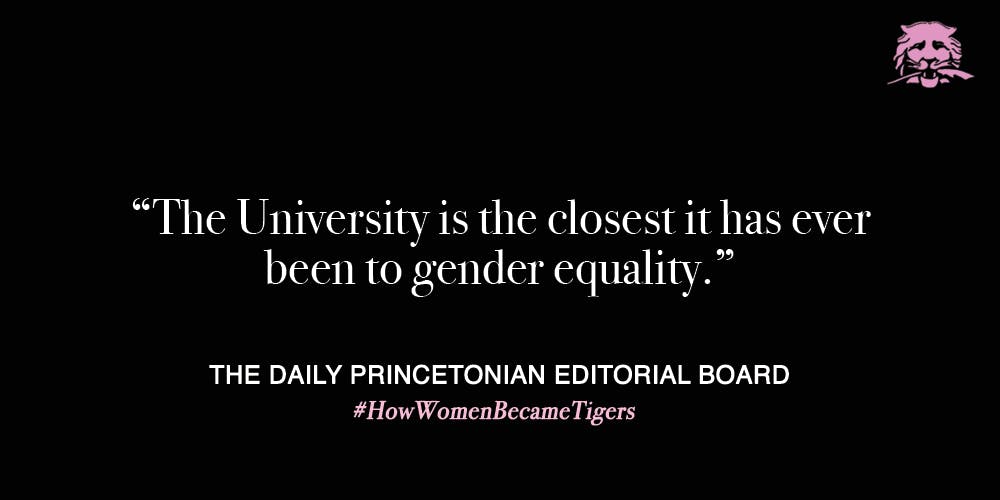Since the first female undergraduates matriculated in 1969, the University has achieved near gender parity in the undergraduate student body, chartered campus organizations such as the Women*s Center, and begun to combat sexual violence on campus. The University welcomed its first female president, Shirley Tilghman, in 2001. Women have led the past four USG administrations. Nine out of 11 eating club presidents, an overwhelming majority, are women.
Despite this progress for women on campus, the University has a long way to go in addressing sexual misconduct, combating misogyny on male sports teams, and rectifying the lack of female mentors.
Sexual violence perpetrated against women remains a pervasive problem at Princeton. According to the 2017 We Speak survey, 27 percent of female undergraduates reported experiencing sexual misconduct (such as harassment, assault, rape, and other inappropriate sexual behavior) during the 2016–17 academic year. Of that 27 percent, 18 percent reported that they were sexually assaulted and 5 percent reported being raped.
While undergraduate men also experienced sexual misconduct, assault, and rape at substantial rates, the prevalence of sexual abuse against this population was significantly lower than the prevalence of sexual abuse against undergraduate women. This disparity also holds between male and female graduate students at the University.
In addition to the pervasiveness of sexual misconduct, a recent incident involving the men’s swimming and diving team exemplifies the misogynistic culture embedded in male sports teams. In December 2016, the University suspended the male swimming and diving team’s season after officials discovered that members of the team had circulated emails with sexist language, along with other offensive material.
Despite numerical gender balance in the undergraduate student body, tenured and tenure-track professors, as well as doctoral students and postdocs, are disproportionately male. For example, only a quarter of full professors at the University are women. As a result, female students have less access to female faculty members as advisers, role models, and mentors.
That being said, the University is closer than ever to gender equality. Women are leaders in classrooms, in extracurriculars, and in the University’s administration. We, as a university, should be proud of the progress in the past, invigorated to keep acting in the present, and optimistic for the future.
Signatories:

Board Chairs
Marcia Brown ’19
Emily Erdos ’19
Board Members

Samuel Aftel ’20
Jon Ort ’21
Dora Zhao ’21
Isabel Hsu ’19
Claire Lee ‘19








